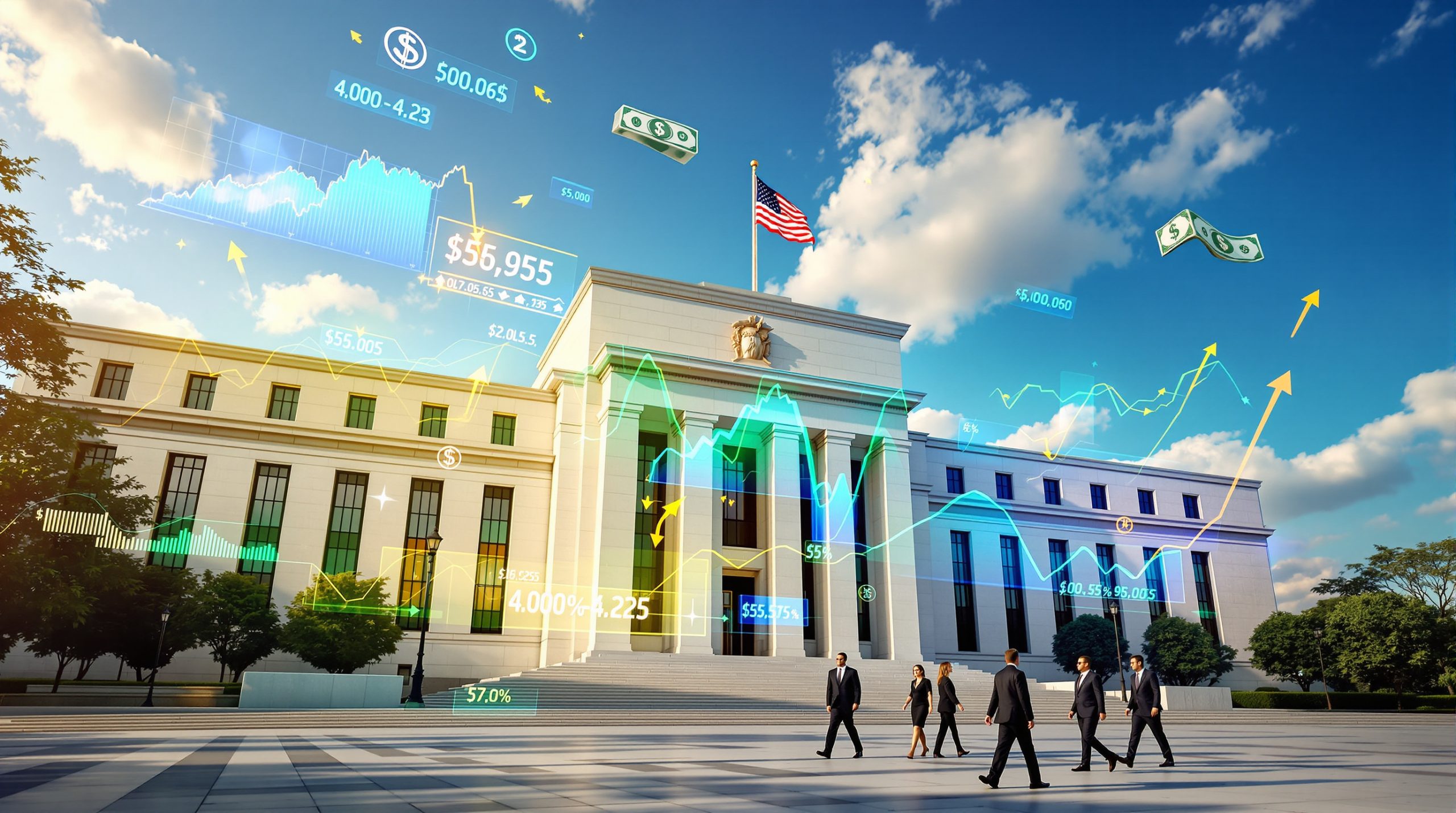What's Happening in the Gold and Silver Markets?
Current Price Dynamics
Gold has experienced remarkable momentum in 2025, achieving significant percentage gains year-to-date. This upward trajectory contrasts sharply with silver's performance, which has remained constrained within a tight trading range for nearly seven weeks. Perhaps most striking is the gold‑silver ratio insights, which has reached historically anomalous levels above 100:1 and maintained this elevated position for an extended period.
The divergence between gold and its traditional monetary metal counterparts has become increasingly pronounced. While gold surged approximately 18% year-to-date, silver has managed only a modest 6% appreciation despite both metals typically benefiting from similar inflationary pressures. This disparity reflects fundamental shifts in how these metals are perceived and utilized within the global financial system.
Platinum and palladium, though historically categorized alongside gold and silver as monetary metals, have also demonstrated significant divergence from gold's performance trajectory. Platinum now trades at a striking 45% discount to gold despite sharing both industrial and monetary characteristics—a situation that defies historical norms and suggests deeper structural issues within the gold and silver markets.
Market Structure Challenges
The dominance of paper derivatives in precious metals price discovery continues to present significant challenges for investors. Current market structures allow futures contracts, rather than physical demand, to determine spot prices. This creates a fundamental disconnect between paper and physical markets, with statistics showing only approximately 1.2% of COMEX gold futures and 0.9% of silver contracts actually resulting in physical delivery during Q1 2025.
The arbitrage opportunities between London and New York markets have reached unprecedented levels, driving massive physical metal movements across the Atlantic. Since January 2025, more than 280 metric tons of gold and 150 million ounces of silver have traveled from UK vaults to COMEX depositories—a logistical operation of extraordinary scale that signals profound imbalances within the global precious metals ecosystem.
This transatlantic migration coincides with London vault inventories dropping to 15-year lows, while COMEX eligible silver stocks have surged to 500 million ounces as of May—representing a remarkable 67% increase from 2024 levels. These inventory shifts suggest sophisticated positioning by major financial institutions anticipating significant changes in physical delivery demands or regulatory requirements.
Why Is Silver Underperforming Gold?
The Monetary Metal Disconnect
Central banks' influence has emerged as a powerful driver of gold's outperformance, acquiring an impressive 1,136 metric tons in 2024 alone. This institutional demand contrasts sharply with silver, where institutional ETFs experienced net outflows of $850 million during the same period. The Federal Reserve's balance sheet expansion to $8.9 trillion has disproportionately benefited gold, which major financial institutions consistently treat as a primary monetary reserve asset.
The historical gold-silver ratio of 12:1 to 15:1 existed during eras when both metals served explicitly monetary functions within the global financial system. Today's 100:1+ ratio reflects a fundamental shift in perception, with gold retaining its monetary status while silver increasingly faces valuation ambiguity due to its dual industrial-monetary nature. This bifurcation creates persistent downward pressure on silver relative to gold.
Silver's identity crisis is further complicated by its substantial industrial demand profile, with 54% of annual consumption coming from photovoltaic and electronics sectors. These industries remain vulnerable to economic cycles, creating demand volatility that doesn't affect gold to the same degree. This industrial dependency contributes significantly to silver's underperformance during periods when monetary concerns drive precious metals markets.
Physical Market Anomalies
The London silver float—available metal not committed to industrial or financial obligations—has diminished dramatically to an estimated 185 million ounces. This represents a 40% reduction from pre-2020 levels and creates potential liquidity concerns should industrial or investment demand surge unexpectedly. This tightening physical supply exists despite paper markets suggesting abundant availability.
May 2025 witnessed extraordinary COMEX silver deliveries reaching 16,200 contracts, equivalent to 81 million ounces or 16% of registered inventories. This represents the highest delivery-to-stock ratio since the 2008 financial crisis and signals growing stress within the physical settlement system. The disconnect between paper trading volumes and physical delivery capabilities continues to widen dangerously.
Particularly concerning are increasing reports of brokers forcing cash settlement on physical delivery requests. In Q1 2025, approximately 23% of delivery intentions were diverted to cash settlement—nearly double the 12% rate observed in 2024. This trend suggests growing difficulties in matching paper contract obligations with actual physical metal availability, a potential harbinger of future silver market squeeze.
How Are Precious Metals Derivatives Markets Functioning?
Settlement and Delivery Concerns
CFTC data reveals that 84% of silver futures positions are held by commercial entities, primarily bullion banks engaged in complex spread trading operations. This concentration of control allows a small number of institutions to exert outsized influence on price discovery mechanisms, potentially suppressing prices below levels that physical supply-demand fundamentals would otherwise dictate.
The JP Morgan settlement of approximately $920 million for spoofing activities represents just one high-profile example of market manipulation. What's less widely understood is that this substantial penalty resolved only about 0.3% of the firm's alleged manipulative trades executed between 2015-2020. The scale of the settlement demonstrates both the magnitude of manipulation and the limited accountability for such activities.
Current COMEX margin requirements enable extraordinary leverage within metals markets, with silver contracts typically allowing 45:1 position sizing. This leverage permits paper market positions equivalent to 18 years of global mine production—a synthetic supply overhang that fundamentally distorts price discovery and creates persistent headwinds for physical metal valuations despite tightening physical inventories.
Possible Reasons for Metal Movement
Initial metal relocations were driven by speculation regarding potential 25% tariffs on bullion imports, which could have added approximately $6.50 per ounce to silver acquisition costs. This tariff arbitrage opportunity created urgency to position physical inventories strategically before policy implementation, driving unprecedented movement between global vaults.
The London-New York arbitrage spread widened to $0.37 per ounce in March 2025, creating approximately $18 million in monthly profit opportunities for entities capable of executing physical arbitrage operations. This persistent pricing differential explains much of the ongoing metal migration and highlights inefficiencies within supposedly efficient global metals markets.
Regulatory filings reveal three major financial institutions increased their allocated metal holdings by 300% during Q1 2025, suggesting sophisticated institutional preparation for increased physical settlement demands. This positioning appears strategic rather than reactionary, indicating that knowledgeable market participants anticipate significant changes in how precious metals markets function in the near future.
What's the Current State of Silver Mining Stocks?
Recent Performance Indicators
The Global X Silver Miners ETF (SIL) posted a remarkable 22% gain in May 2025 despite essentially flat silver prices during the same period. This divergence between mining equities and the underlying metal represents a potentially significant leading indicator, as mining shares historically anticipate metal price movements by 3-6 months. Current enterprise value/EBITDA ratios for silver miners average just 8.1x versus 12.3x for gold producers, highlighting the relative undervaluation within the silver mining sector.
Primary silver producers currently operate at all-in sustaining costs (AISC) averaging $18.50 per ounce, providing healthy 44% profit margins at current silver prices around $33. However, it's crucial to understand that approximately 60% of global silver production comes as byproducts from base metal operations, leaving pure-play silver miners particularly leveraged to silver price movements—both positive and negative.
The undervaluation thesis for silver miners becomes particularly compelling when examining their current trading multiples. Many producers are valued as if silver prices were below $20—far beneath current spot levels and well under production costs for numerous operations. This disconnect creates potential investment opportunities but requires careful analysis of individual companies' production profiles, jurisdictional risks, and balance sheet strength.
Investment Approach for Precious Metals
Physical metal premiums reached 12% for silver and 6% for gold in April 2025, significantly above historical averages and reflecting tightening retail availability. These elevated premiums signal strong demand from individual investors despite institutional hesitancy, suggesting growing mainstream interest in precious metals ownership as inflation concerns persist.
Mining equities currently trade at approximately 0.8x net asset value compared to 1.3x for the broader S&P 500, presenting a valuation gap that could narrow as precious metals sentiment improves. Particularly noteworthy is that 35% of silver producers carry debt-to-equity ratios below 0.5, providing financial resilience should metal prices experience volatility. This relatively conservative financial positioning contrasts with historical cycles when miners typically expanded aggressively during price uptrends.
The Silver Institute projects a structural deficit of 140 million ounces in 2025, requiring inventory drawdowns equivalent to 28% of current exchange stocks. This fundamental supply-demand imbalance exists despite paper market dynamics suggesting abundant availability. Investors positioning ahead of wider recognition of these physical market tightness could benefit significantly, particularly through carefully selected mining equities with strong operational execution.
How Should Investors Approach the Gold and Silver Markets?
Portfolio Diversification Strategies
Physical precious metals allocations should form the foundation of any metals-focused investment strategy. Financial advisors increasingly recommend retail investors maintain physical holdings sufficient to cover 3-6 months of expenses, typically representing 5-10% of net worth. This physical foundation provides protection against counterparty risk—an increasingly important consideration as financial system stresses mount.
"Physical metals provide wealth insurance with zero counterparty risk. Begin with enough for several months of expenses before considering mining shares for growth potential." – David Morgan
For larger portfolios exceeding $10 million, sophisticated cross-asset hedging becomes necessary. Institutional investors typically utilize gold futures to cover 15-20% of equity exposure, providing portfolio resilience during market dislocations. Silver's 2.1 beta to gold prices (versus gold's 1.7 beta to itself) offers greater upside potential but comes with corresponding volatility that requires careful position sizing.
Mining equities provide leverage to metal prices but introduce operational and jurisdictional risks absent from physical holdings. Investors should consider mining shares only after establishing adequate physical positions, focusing on producers with proven management teams, tier-one jurisdictional exposure, and conservative balance sheets. The current valuation disconnect between miners and metal prices creates compelling opportunities for selective exposure.
Market Manipulation Concerns
COMEX commercial short positions currently equivalent to 63 days of global silver production create persistent downward pressure on prices. This paper market overhang allows synthetic supply to suppress physical prices despite tightening inventories and growing industrial demand. Regulatory changes limiting short positions to actual production capacity could fundamentally rebalance this dynamic.
"The futures markets, originally designed for producer hedging, have evolved far beyond their intended purpose. Unlimited short selling without physical backing creates artificial price suppression." – Craig Hemke
Proposed CFTC rule 89-2025 would limit speculative positions to 25% of annual mine output, potentially reducing paper market leverage by 80%. This regulatory shift would dramatically alter market dynamics, forcing paper prices to more accurately reflect physical supply-demand fundamentals. Investors positioning ahead of such changes could benefit significantly as artificial price suppression mechanisms lose effectiveness.
Physical-backed ETFs now hold approximately 1.2 billion ounces of silver, representing 140% of annual industrial demand. This substantial investment demand exists alongside growing industrial consumption, creating potential for accelerated inventory drawdowns should industrial users begin strategic stockpiling. Investors should monitor silver ETF flows closely as leading indicators of changing market sentiment.
Frequently Asked Questions About Precious Metals
What explains the 100:1 gold-silver ratio?
The current gold-silver ratio above 100:1 reflects fundamental monetary policy divergence between the metals. Gold benefits from substantial central bank demand, with institutions acquiring 1,136 tons in 2024 alone. Silver, conversely, relies primarily on retail investment demand, which experienced a 27% drop in coin sales during the same period despite growing industrial applications.
The historically normal 15:1 ratio existed during eras when both metals served explicit monetary functions within the global financial system. Today's elevated ratio largely results from the evolution of modern fiat currency systems, where gold retained its monetary status while silver increasingly faces valuation based on industrial utility rather than monetary characteristics.
Derivatives market structures further exacerbate this divergence by allowing synthetic supply creation disproportionately affecting silver. The smaller market capitalization of silver (approximately 1/10th that of gold) makes it more vulnerable to paper market influence, creating persistent headwinds despite tightening physical inventories and growing industrial applications in renewable energy sectors.
Why is physical metal moving globally?
Strategic inventory management has driven extraordinary physical movements, with more than 850 tons of gold transferring from UK vaults to US depositories in 2025 alone. This migration reflects sophisticated positioning by major financial institutions anticipating regulatory changes and potential delivery stresses within global metals markets.
Tariff arbitrage has created approximately $240 million in metal migration profits since January, as institutions position inventories ahead of potential policy changes. This profit opportunity explains much of the observed metal movement and highlights how regulatory uncertainty creates significant logistical operations within supposedly stable markets.
The implementation of Basel III regulations now treats allocated gold as Tier 1 capital, incentivizing banks to stockpile physical metal rather than paper claims. This regulatory shift fundamentally changes institutional demand dynamics and explains much of the observed inventory relocations as entities optimize their regulatory capital structures through physical metal positioning.
How do futures markets impact physical prices?
Paper derivatives markets dominate price discovery despite representing primarily synthetic rather than physical transactions. With approximately 98% of futures contracts settling in cash rather than metal, the spot prices quoted for physical transactions derive primarily from paper trading rather than actual physical supply-demand dynamics.
The extraordinary leverage permitted within futures markets—approximately 45:1 for silver contracts—allows $90 billion in paper value to effectively control just $2 billion in physical metal. This leverage disparity creates fundamental pricing distortions that persist despite growing evidence of physical market tightness.
The fundamental disconnect between paper and physical markets manifests most clearly during delivery periods, when increased physical settlement demands often correspond with price volatility and widening spreads. These settlement stresses reveal the tenuous relationship between paper trading volumes and actual physical metal availability—a vulnerability that continues to grow as physical inventories decline relative to paper claims.
Are silver mining stocks undervalued?
Silver producers currently trade at approximately 0.6x price-to-book value versus a 1.1x historical average, suggesting significant undervaluation relative to both historical norms and underlying asset values. At current silver prices around $33 per ounce, approximately 75% of miners generate internal rates of return exceeding 20% on new development projects—returns that would command premium valuations in most other sectors.
The Global X Silver Miners ETF's (SIL) 22% gain in May despite flat silver prices signals anticipatory buying before significant metal price movements. This pattern has historically preceded major silver rallies, as sophisticated investors position in mining equities before mainstream recognition of changing market fundamentals.
Investors should carefully evaluate individual companies based on production costs, jurisdictional exposure, and balance sheet strength rather than pursuing broad sector exposure. The current disconnect between silver mining valuations and metal prices creates compelling opportunities for selective investment in high-quality operators with proven management teams and tier-one asset portfolios.
"Mining shares often lead physical metal price movements by months. Current valuations suggest the market is pricing miners as if silver were trading below $20—far beneath current levels and production costs." – David Morgan
Recent gold price highs analysis from major investment banks suggests the momentum in precious metals markets could continue well into 2026, with several institutions revising their gold price forecast upward based on persistent inflationary pressures and geopolitical tensions. For the latest precious metals prices and trends, investors should regularly check resources like Kitco's precious metals price data and Perth Mint's investor information.
Disclaimer: This article contains market analysis and investment perspectives that should not be considered personal financial advice. Precious metals and mining investments involve significant risks including price volatility, liquidity challenges, and potential loss of principal. Investors should conduct thorough due diligence and consult qualified financial advisors before making investment decisions based on the information presented.
Want to Stay Ahead of the Next Major Mineral Discovery?
Discovery Alert's proprietary Discovery IQ model instantly notifies investors of significant ASX mineral discoveries, transforming complex data into actionable insights for both short-term traders and long-term investors. Explore how historic discoveries have generated substantial returns by visiting Discovery Alert's dedicated discoveries page and begin your 30-day free trial today.




